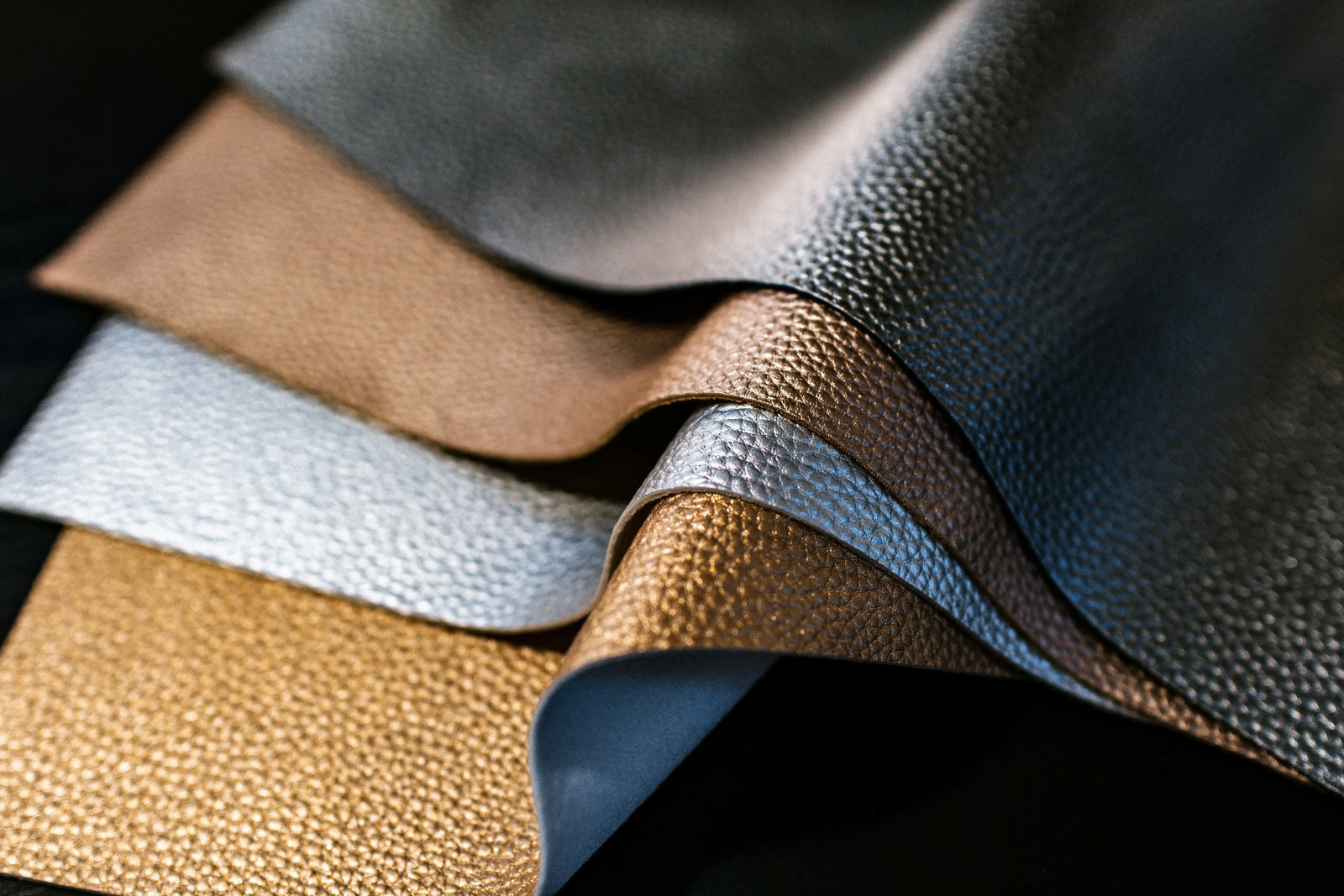When it comes to leather, most brands won’t tell you the truth about where their material comes from — or how it’s made. But the tanning process defines everything: the look, the feel, the smell, the durability, and even the environmental impact of your leather goods.
At Axess Wallets, we use vegetable-tanned leather from Tuscany, crafted the same way it’s been done for centuries. Most of the global leather industry, however, has abandoned this natural process for a faster, cheaper, and far more toxic shortcut: chrome tanning.
Here’s why that difference matters — and why we’ll never compromise on it.

What Is Leather Tanning?
Tanning is the process of transforming raw animal hides into usable leather — durable, flexible, and beautiful. The key lies in stabilizing the collagen fibers in the hide so they won’t rot or harden.
Traditionally, artisans achieved this using natural tannins extracted from tree bark such as oak, chestnut, and mimosa. These organic compounds slowly bond with the collagen, creating a rich, supple material that can last for decades. This ancient craft is known as vegetable tanning.
In contrast, modern industrial tanneries developed a faster, cheaper process in 1858 using chromium salts — known as chrome tanning. The result? Leather that can be “tanned” in a single day, at a fraction of the cost… and at a massive cost to quality and the environment.

The Two Methods Compared
Vegetable-Tanned Leather
-
Made with natural tannins from plants, bark, and wood.
-
Takes 30–60 days to complete, done mostly by hand.
-
Produces thick, organic leather that develops a unique patina over time.
-
Entirely biodegradable and free of toxins or heavy metals.
-
Ages beautifully, softens with use, and lasts for decades.
Chrome-Tanned Leather
-
Made with chromium salts and synthetic acids.
-
Takes only a single day to tan a hide.
-
Produces thin, overly soft leather with uniform color.
-
Creates toxic wastewater containing chromium, lead, and formaldehyde.
-
Ages poorly, cracks quickly, and carries a chemical odor.

Environmental Impact
The most alarming difference between the two methods isn’t visual — it’s environmental.
Chrome tanning creates highly toxic wastewater that contaminates soil and rivers, particularly in developing regions where waste treatment is often neglected. The sludge left behind contains chromium, arsenic, lead, and formaldehyde, substances known to damage ecosystems and human health.
In contrast, vegetable tanning uses natural tannins derived from renewable sources. The wastewater is biodegradable, and the leather it produces carries no synthetic residues. In short — it’s the only truly sustainable tanning method.

Quality and Longevity
Vegetable-tanned leather is thicker, stronger, and more natural in both color and scent. It begins firm, but softens beautifully with time, developing a deep patina that tells the story of its owner. Every mark becomes character — not damage.
Chrome-tanned leather, on the other hand, may feel soft at first, but it’s often bonded with acrylic coatings to hide imperfections. Over time, these synthetic finishes crack, peel, and flake, giving the product a short lifespan and lifeless texture.
That’s why you’ll find chrome-tanned leather in fast fashion — and vegetable-tanned leather in heirlooms.

Aesthetics: Nature vs. Synthetic
Vegetable-tanned leather:
-
Warm, earthy hues that darken gracefully over time.
-
Unique texture and scent — every hide is one-of-a-kind.
-
Gains richness and depth with age and handling.
Chrome-tanned leather:
-
Bright, uniform colors that never evolve.
-
Artificial sheen and chemical smell.
-
Feels soft, but lifeless.

The Verdict: Why Axess Chooses Vegetable-Tanned Leather
Vegetable tanning takes longer. It costs more. It requires real craftsmanship.
But it also creates the world’s finest leather — the kind that ages with dignity and character instead of breaking down.
Every Axess Wallet is made from vegetable-tanned Italian leather sourced from family-owned tanneries in Tuscany. The same traditional process used for centuries — no shortcuts, no chrome, no toxins.
It’s not just a choice of material. It’s a choice of values: authenticity, sustainability, and longevity.
That’s the difference between leather that lives — and leather that dies young. Check out our Core Line and Legacy Line collections.


